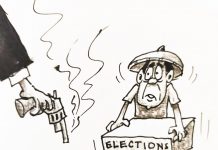April arrives with barely a whisper, and yet it carries a weight many forget to notice: it is National Literature Month. This is not a token observance but a reminder that a people’s soul is embedded in the stories they tell. Without literature, a nation may exist in body but never in spirit.
Literature is not a decorative art in every society—it is a necessity. It records what history cannot always remember: the laughter of children under nipa huts, the silence of widows after the war, the chants of farmers calling rain into their fields. No census, legal archive, or ordinance can contain the fragrance of memory as literature does. It is where our idioms are safe, where our grandmothers’ lullabies are never lost, and where the deepest fears and wildest hopes of a people can be spoken without shame. And so, to neglect it is to erase ourselves while still breathing.
When one speaks of literature in Eastern Visayas, Waray literature must be mentioned—not as a footnote, but as a living, breathing force. For too long, it has remained in the shadows of more dominant regional languages, often dismissed, underestimated, or forgotten altogether. And yet, its value lies not in how many people speak it today, but in the universe that it contains—one shaped by tidal surges, coconut groves, whispered prayers in the dark, and the endless rhythm of people who endure. Waray literature doesn’t just tell stories—it safeguards the collective consciousness of a people who have been battered by storms, both literal and historical.
But the tragedy is this: most Warays themselves are unfamiliar with their own literary heritage. Ask a young student in Tacloban about Iluminado Lucente or Eduardo Makabenta, and you may be met with a shrug. Worse still, many schools continue to privilege foreign texts and Tagalog or English classics while giving only a passing glance at regional literature, if at all. It’s as if our own voices are too small to be worthy of the page. In our own classrooms, our words remain guests, never hosts. That should alarm us more than we admit.
It’s important to realize that literature is not merely for the literary. It is not just for those who write in broadsheets or win national awards. Literature is the unpaid teacher of the community. It helps a grandmother remember the song she sang while fleeing during the war. It gives a young writer in Borongan permission to write about their small town without apology. It allows the fish vendor, the tricycle driver, the housemaid to find parts of themselves in print, not as metaphors for misery, but as central figures in a story that matters.
When literature is neglected, culture becomes ornamental. We end up parading costumes in festivals without understanding the myths behind them. We perform courtship dances but forget the metaphors in the old love songs. Without written and oral literature, our cultural presentations risk becoming entertainment with no soul. We become fluent in mimicry but illiterate in meaning.
This is why National Literature Month must be more than a ceremonial branding on a calendar. It should be the moment we ask difficult questions about the cultural priorities of our schools, LGUs, and even ourselves. How many barangay libraries carry even a modest collection of Waray books? How many local government events make space for storytelling, poetry readings, or creative writing workshops for the youth? Without intentional action, we are letting a treasure rot quietly in the attic.
Literature, especially the regional kind, is not an afterthought to development—it is its foundation. People who know their stories are harder to manipulate, more resilient in crisis, and more daring in imagination. This April, may the observance of National Literature Month compel not just remembrance but recovery: of texts, of language, of identity. For a culture that cannot write itself down is a culture waiting to disappear.




